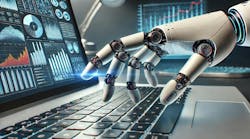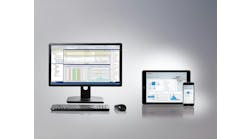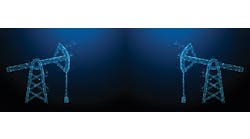In prior installments of this column on industrial mobile robots, we established that an emerging shortage of personnel to operate plant equipment and process units resulted in a growing need for robots and drones that can travel throughout facilities and take over data collection, inspection and other tasks. In addition to the labor shortage, the most common challenges in routine inspections and maintenance activities today include safety risks due to work in hazardous areas, and limits of human capabilities to accurately and efficiently acquire and process information.
Their ability to reach dangerous areas quickly, easily and safely enables robots and drones to improve the overall safety of plant operations and maintenance. They also allow the human workforce to focus on value creation tasks, which are far more attractive to prospective employees. (Hereafter, I’ll only mention robots, but with the understanding that, in practically all cases, my comments apply to drones as well.)
Get your subscription to Control's tri-weekly newsletter.
Advanced robotic technologies can even help end-users perform unattended operations, while also augmenting human capabilities to solve common challenges in daily plant operations and routine inspections. Among the most promising robot capabilities is the ability to provide insightful data, that is, bringing the right data to the right viewers, such as key decision makers. Robots can be equipped with sensors and individually designed payloads to meet operational objectives.
Data integration is always a challenge. While robots can collect lots of data, some prospective users have asked, “but is it useful? What do we do with it?”
This is not really the best way to look at it. The most advanced users have distinguished themselves by their ability to make the most of the data provided by robots. They specifically define the data collection requirements for each mission, match the payloads, and send the robots on their way.
Data collected by robots falls into two fundamental categories: operations and maintenance. An example of the former is a process variable such as a pressure gauge reading. Although the gauge is “disconnected,” the value typically makes its way to the process control system. An operator manually enters it upon completion of the round. Often, this sort of data is only for recording purposes in the historian. An example of maintenance information is a vibration measurement, which could indicate that equipment repair will be needed soon. The ultimate destination of much of the maintenance information is an asset management application.
Compared to human operators or technicians making rounds, robots offer the advantages of accuracy and timeliness. Robots eliminate the human error that might affect manual measurements during rounds and data entry afterward. If a robot resides on a wireless network, it can immediately report data recorded during a round. There’s no need to wait until the round is completed.
Since data collected by a robot is destined for asset management applications, historians and process control systems, significant processing is required within the robot to arrive at a data format that’s appropriate for those platforms. For example, when a robot reads a pressure gauge or measures vibration, it converts those data points to the same digital formats that the destination platforms use.
Robots typically activate applications based on their missions and payloads. To read gauges, a robot uses an application, such as a Plant Image Analyzer (PIA), which processes image data from plant sites using artificial intelligence (AI). PIA analyzes images of devices, such as gauges, and converts readings to digital values. It includes a gauge calibration function, which allows the robot to determine the minimum or zero value, maximum value and the engineering units.
In addition to converting data to digital formats, robots record audio, photos and video. This information is valuable to process operations and maintenance management because, not only can the various formats be viewed and heard on HMI devices and web browsers, but AI applications can also offer much deeper analyses.
An example of a specialized AI application is a color-degradation diagnosis system, which employs a robot integrated with an AI image analyzer to assess objects such as process pipes for color changes. The sensors capture data on hue and brightness, which AI algorithms interpret to diagnose degradation severity. The system flags items for maintenance, offering fast and accurate assessments to preserve object quality and value.
To transport data collected by robots to destinations such as asset management applications and process control systems, industrial companies use specialized platforms, which evolved from SCADA systems. Modern versions, for example, Collaborative Information (CI) Server, can reside on premises or in the cloud. It integrates robot fleet management with a broad array of communication interfaces and protocols, offering compatibility across OT technologies.
Among numerous emerging applications for industrial mobile robots, these capabilities enable a first responder scenario. When the CI Server detects alarms from field devices, a robot can be dispatched to a field location, and the real-time field situation can be checked with image data from the robot.
In emergency situations, deploying robots as first responders offers several advantages, including supporting operators to assess the situation, gather critical data, and execute tasks such as deactivating equipment or assisting in rescue efforts. When integrated with the control system, a robot can continuously provide real-time feedback to the command center, enabling responders to formulate effective strategies and mitigate safety risks.





